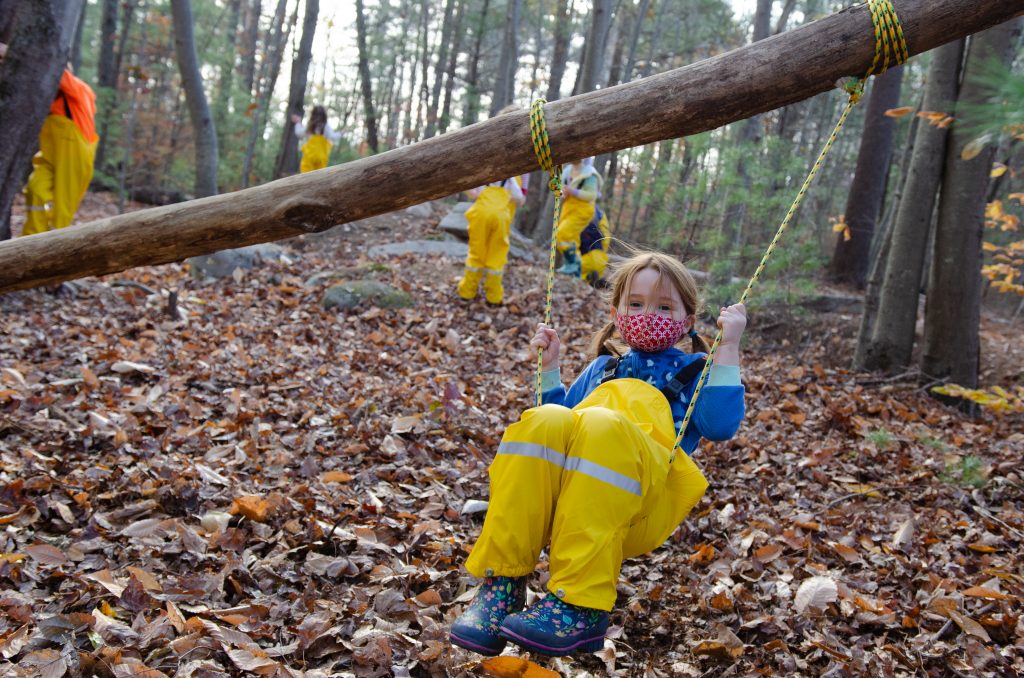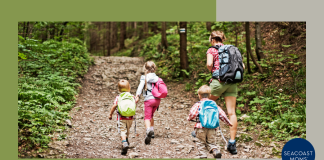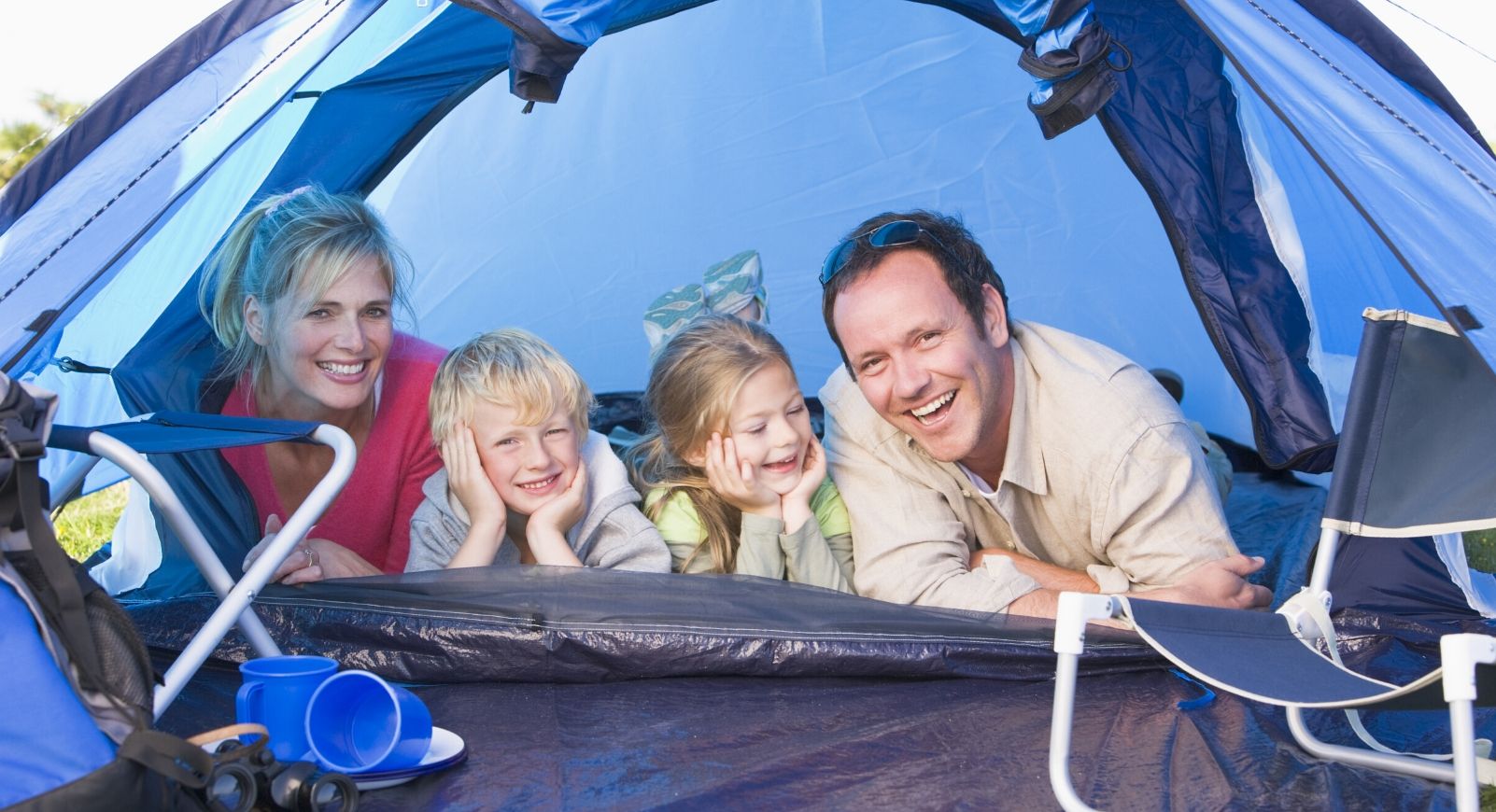This fall, Pre-Kindergarten students (who range from ages three to five at Berwick Academy) engage in our outdoor classroom experiences. While outdoor play and learning are cornerstones of the Berwick experience, I also pulled from my summer academic work with Antioch University New England in Keene, New Hampshire. With this knowledge and information, this school year’s Pre-Kindergarten program of outdoor activities stretches children’s physical capabilities and self-confidence. We do activities like rock scrambling, stick play, hiking, fort building, mud kitchen play, slackline crossing, and tree climbing. Our Pre-Kindergarten students, as well as our Kindergarten and First Grade students, enjoy regular outdoor classroom work. We introduce these adventurous activities, increasing the difficulty, and they gain confidence as time goes on.
As we prepared for the upcoming school year at Berwick Academy, we encouraged parents to think back on their own childhood play.
Since the year includes ample play throughout an 80-acre campus and at our outdoor classroom, it was critical to reflect on those feelings. To remember that feeling of accomplishment and the thrill of doing something courageous: climbing trees, rock scrambling, sledding, riding your bike fast, digging deep holes in the dirt, playing with sticks, using real tools to hammer or saw, etc. We also know that research informed by parents and teachers of Forest Kindergarten programs indicates that children thrive on taking safe-risks in play, especially while in nature. Children can explore many challenge levels at their own pace. Thus allowing a more holistic approach to child development.
 So, what are some of the ways that outdoor play – and climbing trees – enhance children’s skills?
So, what are some of the ways that outdoor play – and climbing trees – enhance children’s skills?
-
Children use balance and core strength to stay upright. The unpredictability of the terrain of our extensive woodland trails asks something not required of them when walking down hallways or on sidewalks.
-
It gives various opportunities for sensory experiences. Teachers can use guiding questions such as: What do you notice? How does it feel? What do you hear?
-
Children collaborate and learn teamwork. Kids work with peers as they build forts using sticks and branches, move natural objects, or solve problems such as building a bridge over water.
-
Students learn to regulate how much force is needed to complete a task. From playing tag without hurting another child or holding something fragile with appropriate gentleness, children learn to regulate their force. . Working outdoors, such as digging in the dirt, or pulling a wagon with heavy rocks or pails filled with stones or shells, activates this sense.
-
Climbing trees requires motor planning, problem solving, patience, judgment, and persistence. Whether it’s a child climbing to the top, or one who is happy to hang from a branch with their feet inches from the ground, the thrill is theirs for the taking. Adults can then inquire with children such things as: What is wonderful about trees? What do we need to be careful or mindful of as we play? How will we stay safe?
As an early elementary educator, I witness children enjoy as they explore the outdoors. I watch them gain confidence, communication skills, and an awareness of self.
I believe these are of equal value to what they gain cognitively through these grounded experiences. Even as we head into the colder winter months here along the Seacoast, we can continue to think about outdoor activities that nurture our children’s minds and bodies. From shoveling and digging snow, pulling and riding a sled, studying the changes in nature as seasons progress, and even winter hiking or snowshoeing — there are endless possibilities.
For more reading about the benefits of climbing trees for children, and outdoor play experiences in general, read Balanced and Barefoot: How Unrestricted Outdoor Play Makes for Strong, Confident, and Capable Children by Angela J. Hanscom.
Nancy Loftus, Berwick Academy – Lead Pre-K Teacher
BA Elementary Education, Boston College
MS Learning Disabilities, The College of St. Rose










